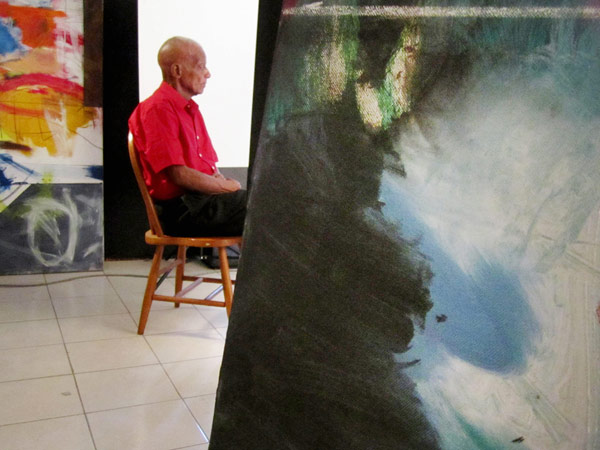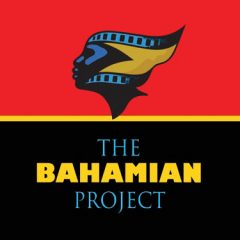
Capturing the true essence of the Bahamian spirit is one of the many ambitious goals behind a captivating new arts initiative that seeks to help preserve the character and legacy of the country’s most precious resource – its people.
The photography project, known as the Bahamian Project, is the brainchild of veteran and award winning photographer Duke Wells, who came up with the idea following the death of Bahamian cultural icon, Jackson Burnside in 2011.
“We looked around and realized there was nothing officially preserving the legacy of great Bahamians who had died. ‘Bonefish’ Foley, Paul Adderley. Just in the past several months there have been so many, and there’s nothing that properly says that this person was part of our history, our culture,” says project manager Lisa Wells, Duke’s wife. “What are future generations going to look back on, some crappy little Facebook photo? It doesn’t seem right.”
Its ultimate goal is to create a collection of portraits that will serve as the foundation of a permanent National Portrait Gallery – much like those in Washington D.C. and London – but at the heart of the Bahamian Project is the desire to capture something that is often difficult to put into words, but may be easier to express in pictures.
The subjects of the project will include Bahamians and members of the community from all walks of life and islands. And they may have very little in common, other than they must have made a positive contribution to society and serve as a good role model.
Thirteen portraits have been shot so far, including well known faces such as Sir Durward Knowles, Peanuts Taylor, Kendall Hanna and Pamela Burnside, and the less well known, like ‘One Hand’ Stubbs at the Main Post Office, who despite suffering a tragedy at 19 – now in his 70s – has a positive story to tell.
“This is not a popularity contest,” notes Duke Wells. “We want people who have made positive contributions to culture and society.
“We want to photograph the bright lights and raw gems of Bahamian society.”
The list of potential subjects is long, now over 100, and is expected to grow even longer. Wells and his partners are trying to secure sponsorship for the project, which at its culmination will be known as the Bahamian Collection.
Subjects are being chosen by a committee made up of representatives of the project’s partners, which include the National Art Gallery of The Bahamas (NAGB) and Popopstudios International Centre for the Visual Arts and Diane Phillips. Nominations can also be put forward by filling out a form online at bahamianproject.com.
At the end of the first year of this three-year project, an exhibition of a selection of the photographs will be staged at the NAGB as part of the 40th anniversary of independence celebrations.
What intrigued NAGB Director Amanda Coulson about the project is that it will feature not just well known Bahamians, but also ordinary people who encapsulate the Bahamian spirit.
“I think it will reflect where we are today, where we came from, where we’re going,” says Coulson. “Identity is always an issue for Bahamians and this will give people something to think about.
“It’s also important for people to know that an individual can have an impact on society, whether they are a politician or a mechanic. It’s important to understand the importance of an individual to society.”
John Cox, founder/director of Popopstudios, where Duke and Lisa have a studio and the majority of the portraits will be shot, is excited about the opportunity and the potential exposure it could create.
“It’s an opportunity to expose the function and role that Popop and institutions like Popop play in the community,” Cox says.
Wells hopes that exhibitions will also be staged at the end of the second and third years of the project, but in addition to the exhibitions, free workshops and seminars will be held to raise awareness of portrait photography and to attract more interest in the project. The initiatives will also expose young Bahamians to fine art portraiture, which Wells says is a dying art.
Good portraiture photography captures the character and essence of the subject says Wells. “It doesn’t just make a person look good; it captures character.”
He also notes that The Bahamas is in a unique position that makes a project like the Bahamian Project very timely.
Just shy of its 40th anniversary, some of the great Bahamians who formed the country’s identity are still alive and can be captured in this project. Wells suggests that for those great Bahamians who have already passed away, a good portrait painter should be commissioned to paint those portraits from a selection of snapshots.
At the end of the project there are plans to produce a coffee table book and a documentary of the process, and the entire collection of photographs will be given as a gift to The Bahamas to be housed at an appropriate institution.
“And then 50 years from now people would still be able to look at these photos to see the people who made The Bahamas what it is,” says Wells.
Recommend someone you think should be included.
Erica Wells
The Nassau Guardian
Published: Saturday, November 10, 2012
Photo by Lisa Wells showing in progress photography session with Kendal Hanna for The Bahamian Project
